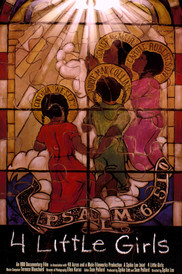
The following is my first entry in this blog’s self-declared Laurel & Hardy Month. If you’re a L&H fan, watch this space, as there’s plenty more to come!

What if, just the other day, you had viewed a copy of Hats Off — the only Laurel & Hardy film that hasn’t been seen in any form for decades? As an L&H buff, your most likely emotions would be: (a) astonishment, at your good luck in seeing such a rare find; and (b) joy, at being able to watch yet another chapter in the Laurel & Hardy canon.
Such was my experience with Cuckoo, a lovingly-compiled British L&H documentary that last saw any kind of broadcast in 1976. Years ago, for no reason other than the typical generosity to be found among L&H buffs, a British member of the online Laurel & Hardy Forum sent me a DVD of a second- or third-generation copy of this documentary. The gentleman warned me that, since the copy was over 30 years old, it would look a little bit beaten-up. After about five minutes of viewing it, the dupe-like quality of the video hardly mattered, because – as with Laurel & Hardy’s own best work – the care and love involved in the preparation of this film shown through like the midday sun.
Narrated by the British comedy duo Morecambe and Wise, the documentary cleverly makes generous use of clips from L&H movies to comment on The Boys’ life stories. (Best intercut of all: Ollie in Oliver the Eighth expressing his wish to meet “the future Mrs. Hardy,” followed by an interview with that very person: Babe’s widow, Lucille Hardy Price.)
The doc also sports priceless interviews from Price, Babe London (Ollie’s hapless bride-to-be in the L&H short Our Wife), and L&H followers Marcel Marceau, Dick Van Dyke, and Jerry Lewis. In particular, Lewis (never shy about expressing his philosophies on-camera to start with) makes some surprisingly insightful comments about Stan Laurel’s modus operandi, i.e., most people would care only about the joy of receiving a lavish gift such as a piano; only Laurel would be interested in the plight of the piano’s delivery men (The Music Box).
The documentary sports a few inaccuracies (such as the oft-quoted “fact” that Stan Laurel was married eight times – wrong again!). But in the end, my only major regret about Cuckoo is that this loving L&H tribute is so frustratingly unavailable to the general public. Below is a link to the documentary’s current posting on YouTube; catch it while you can, as it will probably be yanked eventually!)













